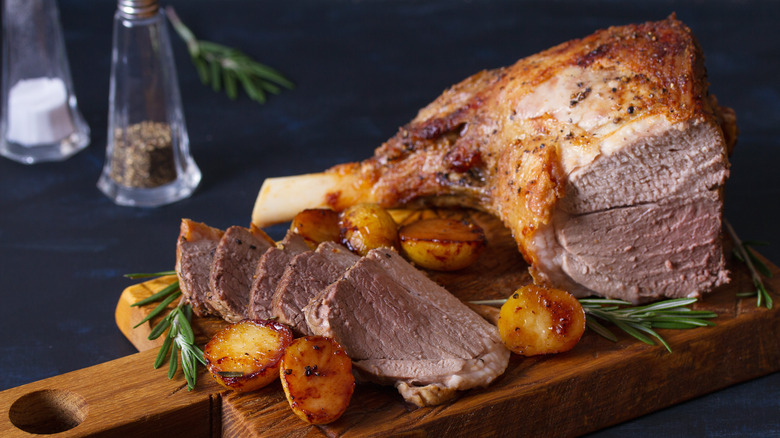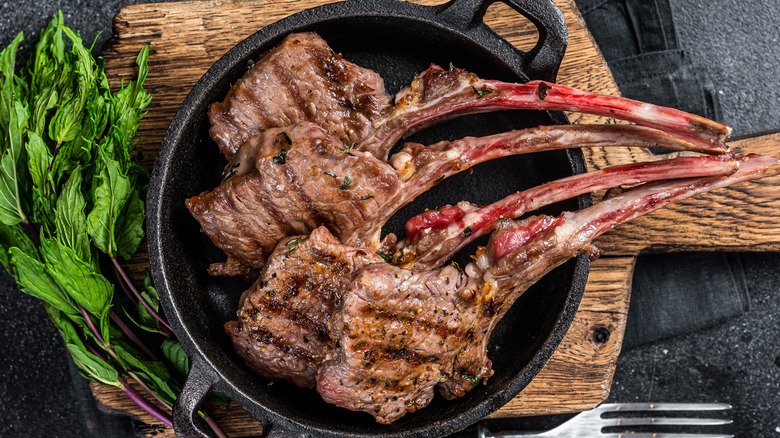Why You Should Raise The Oven Temp When Roasting Lean Cuts Of Lamb
Though not nearly as popular a meat choice as beef, pork, or chicken, lamb is a fantastic meat option, bursting with unique, gamey flavors. Though the animal has its fair share of cuts, the leaner ones, those without much connective tissue or fat, are some of the most sought-after. And when it comes to cooking methods, roasting your lean cut of lamb at higher temperatures is the key to getting things right.
Lean lamb cuts, like the leg and loin chops, benefit from higher temperatures in two ways. First, the outside gets nice and brown, developing a good crust and locking in flavor. Second, this browning happens before the interior is finished cooking. This way you can feel confident in knowing that you're getting a beautifully browned cut of lamb, without the meat drying out on the inside.
The question is, though, what are the right high temperatures at which to roast lamb in the oven? You don't want it to be cooking at too high a heat for the entire time, but at the same time, you don't want it in the oven for too long at lower temperatures, lest the cut dries out.
How high is too high?
With leaner cuts of lamb, you don't want to be venturing anywhere north of 450 degrees Fahrenheit. There are a couple of reasons for this, but the chief among which is that 450 hits the browning sweet spot. About 500 degrees Fahrenheit may brown the meat too quickly and begin cooking the interior before you're ready. Turn the oven down by 50 degrees, and your lamb will begin to brown after 15 minutes. Then you can turn down the heat.
A good temperature for the remainder of the roast is 350 degrees Fahrenheit. Compared to the fattier cuts of lamb, which prefer long roast times at lower temperatures, 350 is high. For learner cuts, like a leg of lamb, you really only need to cook it for 25 minutes per pound after browning for medium rare. And where boneless legs can weigh as little as 2 pounds, it's only going to be in the oven for a little over an hour.
There's nothing revolutionary about this roasting method, other than the fact that it works. The reason to do it this way, as we said at the beginning, is to allow the lamb to brown nicely on the outside early, and then continue to cook gently as the heat begins to work on the inside of the meat. So, don't fret about the higher temperatures when it comes to lean cuts. Your lamb will turn out just fine.

